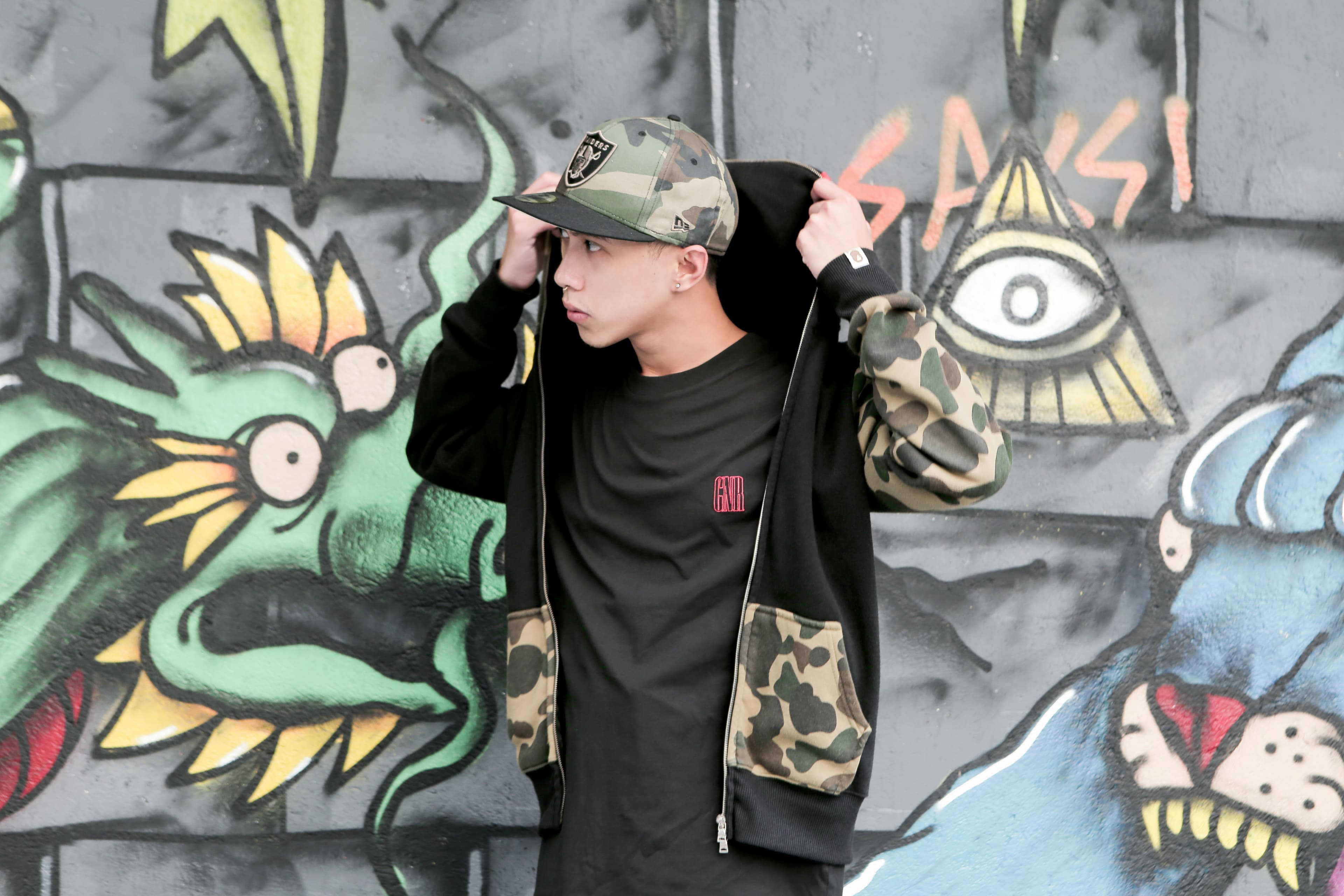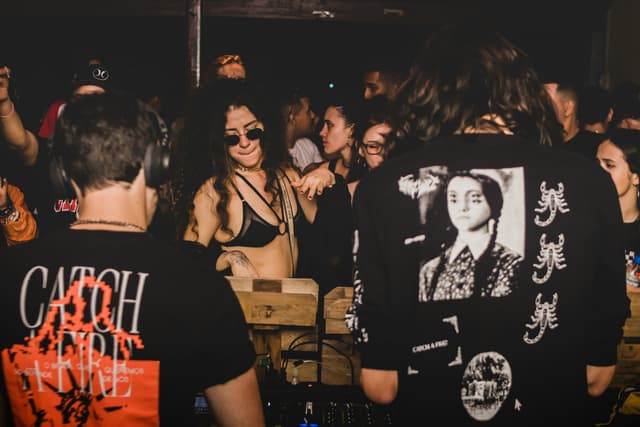Streetwear is no longer just a fashion subculture—it’s a global phenomenon that has revolutionized the fashion industry. What began as a style rooted in the streets of cities like New York and Tokyo has blossomed into a multi-billion-dollar industry that has influenced everything from high fashion runways to sneaker culture. But how did streetwear, originally associated with youth rebellion and counterculture, come to dominate the fashion world? In this article, we explore the evolution of streetwear, its cultural significance, and its impact on both fashion and society.
1. The Birth of Streetwear: A Cultural Movement
Streetwear emerged in the 1980s and early 1990s, born from the intersection of hip-hop culture, skateboarding, graffiti art, and punk rock. These subcultures shared a rebellious spirit, rejecting the norms of mainstream fashion and creating their own codes of style. It was a reflection of urban youth, and the clothing they wore was designed to stand out, often featuring bold logos, graphic prints, and unique designs.
Brands like Stüssy, Supreme, and A Bathing Ape (BAPE) were among the first to establish streetwear’s distinct identity. These brands were heavily influenced by skate culture and hip-hop, using bold imagery and graphics that were both artistic and anti-establishment. The DIY ethos of these movements translated directly into the clothes—often simple yet striking, with an emphasis on individuality.
In the early days, streetwear wasn’t about luxury or status—it was about authenticity and self-expression. It was the uniform of youth subcultures who felt alienated from mainstream fashion, and as such, it was a visual representation of rebellion and defiance.
2. From Underground to Mainstream: The Global Rise of Streetwear
By the late 1990s and early 2000s, streetwear had begun to gain traction beyond its underground roots. High-end fashion designers and brands took notice of the growing influence of streetwear, and collaborations between streetwear labels and luxury houses began to emerge. This helped propel streetwear into the mainstream and transformed it from a niche subculture to a global style phenomenon.
One of the pivotal moments in streetwear’s rise to prominence came with the collaboration between Supreme and Louis Vuitton in 2017. This high-profile partnership marked a turning point, showing that streetwear had successfully infiltrated high fashion. The collaboration sold out almost instantly, further solidifying the idea that streetwear wasn’t just for the streets—it had become a cultural and economic force.
The influence of streetwear continued to spread, with major fashion houses like Balenciaga, Gucci, and Off-White adopting streetwear-inspired designs. These brands began incorporating oversized silhouettes, graphic prints, and sneakers into their collections, blurring the lines between high fashion and street style. Streetwear’s presence at fashion week and on luxury runways became a regular occurrence, and it wasn’t long before streetwear itself became a status symbol.
3. Streetwear and Sneakers: A Cultural Partnership
No conversation about streetwear would be complete without mentioning sneakers—the footwear that helped define the culture. The sneaker industry has long been a driving force behind streetwear’s rise, with limited-edition drops, collaborations, and exclusivity being central to the hype. Brands like Nike, Adidas, and Jordan Brand have built massive followings through their streetwear-inspired releases.
The idea of sneaker culture as a form of status is rooted in the rarity of certain releases. Limited-edition sneakers, especially those produced in collaboration with streetwear brands or designers, can fetch thousands of dollars on the resale market. The Air Jordan line, for example, has become a cultural icon, with each new release being eagerly anticipated by collectors and fashion enthusiasts alike.
Streetwear brands have also capitalized on this culture of exclusivity by releasing limited-edition clothing and accessories, often featuring bold graphics and logos. The scarcity of these items creates a sense of urgency, driving demand and fueling the hype around each new drop. This has led to the rise of resale culture, where items can be bought and sold for much higher prices than their original retail value.
4. The Role of Social Media: Streetwear’s Digital Revolution
In today’s digital age, social media has played a significant role in the evolution of streetwear. Platforms like Instagram, TikTok, and Twitter have become powerful tools for both brands and consumers to share and discover new trends. Streetwear brands have embraced these platforms to promote their collections, engage with their audience, and create a sense of exclusivity around their drops.
Social media has also allowed streetwear to reach a global audience. What started as a localized phenomenon in cities like New York and Tokyo quickly became a worldwide movement, thanks to the viral nature of online content. Influencers and celebrities have also contributed to the rise of streetwear, with many sporting streetwear brands in their everyday life and on the red carpet.
Streetwear has become a visual language, with Instagram influencers and fashion bloggers showcasing their personal takes on the style. The rise of streetwear culture on social media has democratized fashion, allowing anyone with access to a smartphone and an eye for style to participate in the conversation. The “hype” around streetwear is often amplified through user-generated content, creating a global community of fashion enthusiasts who are constantly pushing the boundaries of what streetwear can be.
5. Streetwear and the Future: Innovation and Inclusivity
As streetwear continues to evolve, it is expected to embrace new technologies, design innovations, and broader inclusivity. Sustainability is one area where streetwear is starting to make strides, as consumers increasingly demand eco-friendly materials and ethical production practices. Brands like Patagonia and Pangaia are incorporating sustainable materials into their collections, and many streetwear labels are following suit by exploring ways to minimize their environmental impact.
Another area of innovation lies in the intersection of technology and fashion. Augmented reality (AR) and virtual fashion are becoming more prevalent, with brands experimenting with virtual clothing and digital-only drops. This could change the way streetwear is consumed, making it even more exclusive and accessible to a global audience.
Additionally, the future of streetwear will likely be shaped by a more inclusive approach to design. While streetwear has historically been associated with urban youth and a certain demographic, many brands are now embracing diversity and representing a wider range of cultures, body types, and identities. This inclusivity will ensure that streetwear remains relevant and relatable to a broader audience, further cementing its place in the fashion world.
6. The Enduring Legacy of Streetwear: More Than Just a Trend
Streetwear’s journey from subculture to global phenomenon has been nothing short of remarkable. What started as a style rooted in rebellion and self-expression has evolved into a cultural movement that has influenced not only fashion but music, art, and youth culture at large. Its ability to blend the lines between high fashion and street style, its relationship with sneaker culture, and its impact on social media have all contributed to its lasting legacy.
Streetwear is more than just a trend; it’s a testament to the power of youth culture and the ability of fashion to transcend boundaries. As it continues to evolve and shape the fashion industry, streetwear will undoubtedly remain a driving force, influencing the way we dress, express ourselves, and connect with one another.
Loading...



